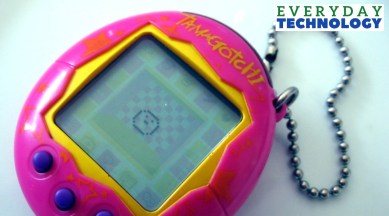Explained: Who are the Tamagotchi Generation, the digital children of the future?
The name comes from the digital pet created by the Japanese toy manufacturer Bandai, which was a global rage in the 1990s and early years of this century. As of last year, more than 80 million Tamagotchi toys had been sold worldwide.

A new book has predicted that by the third quarter of this century, parents will have the choice of having digital offspring. Which means that if you are in your teens now, you may look forward to playing with a grandchild who will exist only in the immersive digital world of the metaverse.
This will be the ‘Tamagotchi Generation’, says British behavioural psychologist and user experience (UX) professional Catriona Campbell, author of ‘AI By Design: A Plan for Living With Artificial Intelligence’ (CRC Press, 2022).
Why ‘Tamagotchi’ kids?
The name comes from the digital pet created by the Japanese toy manufacturer Bandai, which was a global rage in the 1990s and early years of this century. As of last year, more than 80 million Tamagotchi toys had been sold worldwide.
The toy is an egg-shaped video game the size of a keychain, which has a screen and buttons. Once the pet is activated, an egg appears on the screen, and hatches into a pet for the player to raise. The pets feel hungry, happy, sick, and want to go to the toilet etc., and the player can care as much or as little for the pet as they desire. What the pet grows up to be depends on how it has been trained and raised by the player.
What will the kids look like?
Today’s technology is unrecognisable from the time when the Tamagotchi toy was developed, and according to Campbell the virtual children of the future can be built to look like their parents, and will be able to provide a range of emotional responses. This, according to an article in The Guardian, will include speech, “which will range from ‘googoo gaga’ to backchat, as they grow older”.
You will have to put on a virtual reality headset to bring the child to life — and a report in The Telegraph quoted Campbell as suggesting that wearing “high-tech gloves able to deliver tactile feedback” while handling the Tamagotchi kid “might reproduce the physical sensations of cuddling, feeding and playing with one’s offspring”.
A report in The Mail Online quoted Campbell as saying parents would be able to interact with their digital kids in digital environments such as a park, swimming pool or living room. “They will also be able to choose how quickly the children grow up, if at all, and can share conversations and listen to a baby’s coo and giggle as part of the vision for the futuristic technology,” the Mail Online report said.
But what’s wrong with real kids?
There is nothing wrong — the Tamagotchis will just be the metaverse version for those who might want them. And the metaverse is seen as the inevitable future
of the Internet.
However, Campbell has mentioned what she sees as specific advantages to preferring a virtual kid to a real one — among them, the fact that they will cost virtually nothing to bring up, they will consume very little resources in a world that is already bursting at the seams and where the spectre of food shortages looms large, and they will have a tiny environmental footprint from beginning to end.
The Telegraph report quoted a 2020 YouGov study into why couples chose not to have children found that nearly 1 in 10 are concerned about overpopulation, and another 10 per cent are worried about the cost of raising a child.
“Make no mistake that this development, should it indeed take place, is a technological game-changer which, if managed correctly, could help us solve some of today’s most pressing issues, including overpopulation,” the Mail Online report quoted Campbell as saying.
All of this sounds so fantastical and improbable.
Newsletter | Click to get the day’s best explainers in your inbox
It may not be. The Internet and mobile phones also sounded like bizarre ideas to many when they were first proposed. Tech experts have repeatedly predicted that the metaverse and Internet of Things, powered by advanced telecoms networks of the future, will change almost every aspect of the ways in which we live and work.
So far as digital babies go, a proof of principle is already in existence. Several years ago, the Laboratory for Animate Technologies at the University of Auckland said it was working on “an interactive animated virtual infant prototype” called BabyX, a “computer-generated psychobiological simulation…incorporating computational models of the basic neural systems that are involved in interactive behaviour and learning”.
The New Zealand company Soul Machines, led by AI researcher Dr Mark Sagar (who worked on the special visual effects of Hollywood films ‘King Kong’, ‘Avatar’, and ‘Rise of the Planet of the Apes’), has since pioneered research into progressing human-machine collaboration, and built BabyX with her own digital brain which, according to the company, “autonomously animates BabyX in real-time, creating a natural interaction between human and machine”.